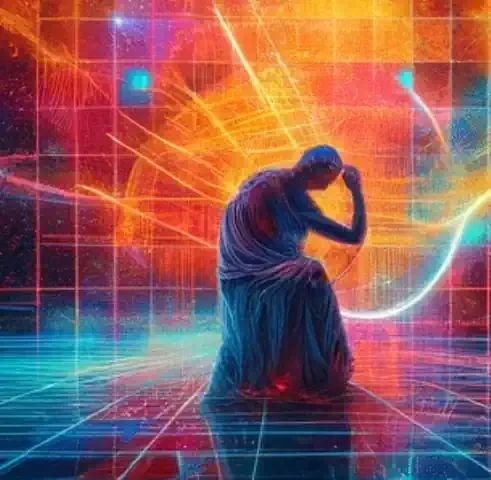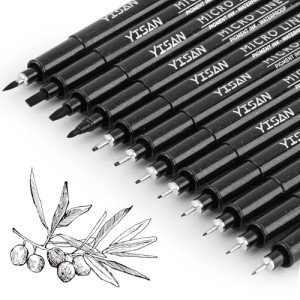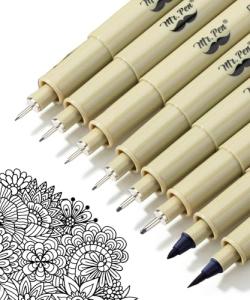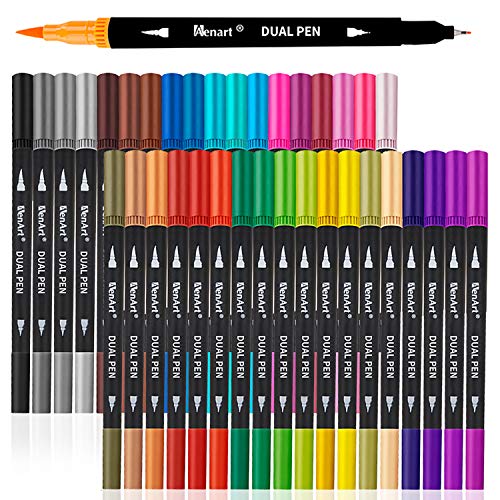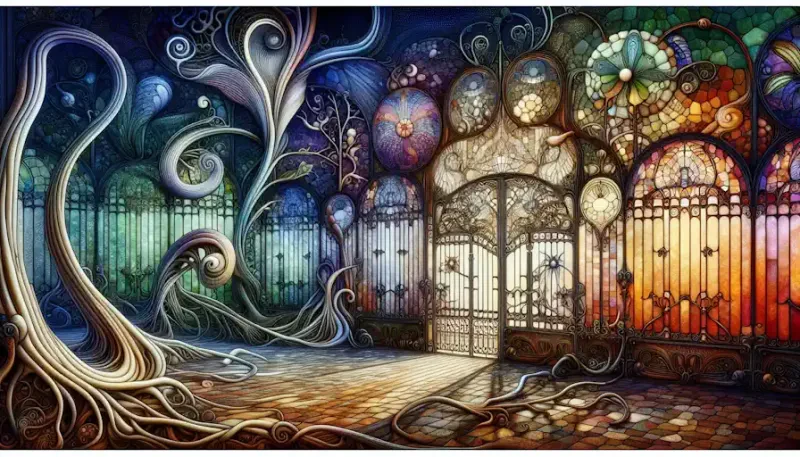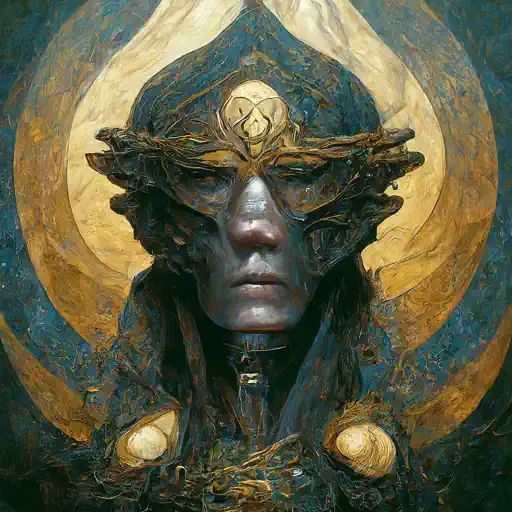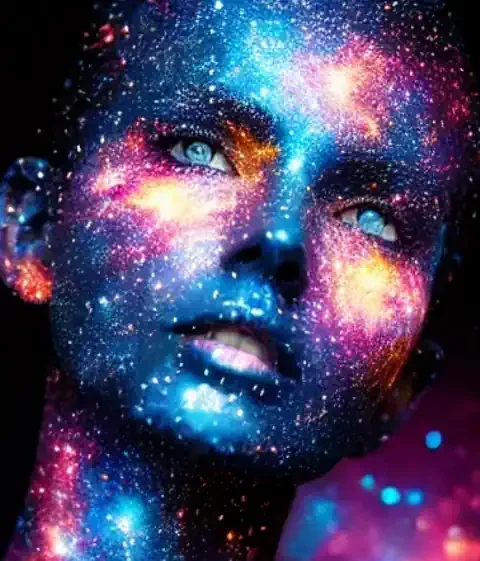Introduction
The Universal Allure of Art
Art has an innate ability to captivate, inspire, and provoke thought. From ancient cave paintings to modern digital installations, the realm of art spans centuries and cultures, transcending language barriers and societal divides. Whether it's a breathtaking painting that evokes raw emotion, a powerful piece of music that resonates with the soul, or a mesmerizing dance performance that tells a story without words, art has a way of touching the deepest parts of our humanity.
Purpose of the Article: Guiding Through the Diverse Landscape of the Art World
In this article, we embark on a journey through the vast and diverse world of art. Our aim is to serve as your guide, providing insights, knowledge, and practical tips to help you navigate this rich tapestry of creativity. Whether you're a seasoned art enthusiast or a curious newcomer, there's something for everyone in the world of art, and we're here to help you discover it.
Brief Overview of What to Expect in the Article
We'll begin by delving into the essence of art, exploring its definition and significance in society. From there, we'll dive into the various types of art, spanning visual, performing, and literary forms. Then, we'll discuss strategies for appreciating art, whether it's understanding different movements or interpreting symbolism. Next, we'll explore the myriad ways to access art, from traditional venues like museums to digital platforms and virtual experiences. We'll also provide insights into how you can get involved in the art world, whether through education, participation, or support. Finally, we'll address some of the challenges and opportunities facing the art world today, from issues of accessibility to the impact of technology. By the end of this journey, we hope you'll emerge with a deeper appreciation for the beauty, complexity, and enduring power of art.
Understanding Art
Definition of Art: Exploring the Multifaceted Nature of Art
Art defies simple categorization; it encompasses a vast array of creative expressions that can be interpreted and appreciated in countless ways. At its core, art is a reflection of the human experience, a medium through which artists communicate their thoughts, emotions, and perspectives to the world. While traditional forms of art such as painting and sculpture may come to mind, art extends far beyond these boundaries, encompassing everything from performance art to digital installations. What unites these diverse forms is their ability to evoke a response, whether it's awe, contemplation, or introspection. Ultimately, art is a deeply personal and subjective experience, with each individual bringing their own unique interpretation to the table.
Historical Perspective: Tracing the Evolution of Art Through Different Periods and Movements
The history of art is a rich tapestry woven with threads of innovation, creativity, and cultural exchange. From the ancient civilizations of Mesopotamia and Egypt to the Renaissance masters of Europe and the avant-garde movements of the 20th century, art has undergone countless transformations throughout history. Each period and movement is characterized by its own distinctive style, techniques, and themes, reflecting the social, political, and philosophical currents of the time. By studying the evolution of art over the centuries, we gain a deeper appreciation for its role as a mirror of human civilization and a catalyst for change.
Importance of Art in Society: Discussing Its Cultural, Social, and Emotional Significance
Art plays a fundamental role in shaping our cultural identity, serving as a repository of shared values, beliefs, and traditions. From ancient cave paintings that provide insights into prehistoric life to contemporary artworks that challenge our perceptions of the world, art serves as a reflection of society's collective consciousness. Beyond its cultural significance, art also has the power to provoke social change, challenge injustice, and foster empathy and understanding. Moreover, art has a profound emotional impact on individuals, serving as a source of inspiration, solace, and joy. Whether we're admiring a masterpiece in a museum or creating our own works of art, art enriches our lives in ways that are both profound and deeply personal.
Types of Art
Visual Arts
Visual arts encompass a broad spectrum of creative expressions that appeal to our sense of sight. From the vibrant colors of a painting to the intricate details of a sculpture, visual art has the power to captivate, inspire, and provoke thought. Within the realm of visual arts, there are numerous mediums and techniques that artists employ to bring their visions to life. Whether it's the time-honored tradition of oil painting, the delicate art of watercolor, or the experimental realm of mixed media, each medium offers its own unique possibilities for artistic expression.
Painting
Painting is perhaps the most widely recognized form of visual art, dating back thousands of years to the earliest cave paintings. From classical portraits to abstract compositions, painting encompasses a diverse range of styles and techniques. Whether an artist works with oils, acrylics, watercolors, or other mediums, painting offers endless opportunities for creativity and self-expression.
Sculpture
Sculpture is the art of creating three-dimensional forms, often using materials such as clay, wood, metal, or stone. From ancient Greek statues to modern abstract sculptures, this medium allows artists to explore form, texture, and space in exciting ways. Whether sculpting figurative works that capture the human form or abstract pieces that challenge our perceptions of reality, sculptors bring their visions to life through the tactile manipulation of materials.
Photography
Photography is a relatively modern art form, yet it has quickly become one of the most powerful and pervasive forms of visual expression. With the advent of digital technology, photography has become more accessible than ever, allowing anyone with a camera to capture and share their unique perspective on the world. From documentary photography that sheds light on social issues to fine art photography that explores the boundaries of perception, this medium offers endless possibilities for creative exploration.
Other Forms (Collage, Printmaking, etc.)
In addition to painting, sculpture, and photography, the realm of visual arts encompasses a wide variety of other forms and mediums. Collage, for example, involves assembling various materials and images to create a unified composition, while printmaking allows artists to create multiple copies of their artwork using techniques such as etching, lithography, and screen printing. These and other forms of visual art offer artists new ways to experiment, innovate, and push the boundaries of their creativity.
Navigating Art Appreciation
Developing an Eye for Art: Tips for Observing and Interpreting Artworks
Art appreciation goes beyond simply looking at a painting or sculpture; it involves engaging with the artwork on a deeper level, understanding its context, and interpreting its meaning. Whether you're a seasoned art enthusiast or a newcomer to the world of art, developing an eye for art takes time and practice. Here are some tips to help you hone your skills:
Observe Mindfully
Take the time to really look at the artwork, paying attention to details such as color, composition, texture, and form. Notice how different elements interact with each other and how they contribute to the overall impact of the piece.
Consider Context
Learn about the artist's background, the historical period in which the artwork was created, and the cultural and social influences that may have shaped its creation. Understanding the context in which the artwork was made can provide valuable insights into its meaning and significance.
Ask Questions
Don't be afraid to ask questions and engage in discussions about the artwork. What emotions does it evoke? What themes or ideas does it explore? How does it compare to other works of art you've encountered? Asking questions can deepen your understanding of the artwork and spark new insights.
Trust Your Instincts
Art appreciation is a deeply personal experience, and there's no right or wrong way to interpret a work of art. Trust your instincts and allow yourself to respond to the artwork intuitively. Your unique perspective is what makes art appreciation such a rich and rewarding experience.
Understanding Art Movements: Identifying Key Characteristics and Artists of Different Movements
Throughout history, artists have been part of various movements and schools of thought, each characterized by its own distinctive style, techniques, and philosophical principles. By familiarizing yourself with different art movements, you can gain a deeper appreciation for the diversity and evolution of artistic expression. Here are some key movements to explore:
Renaissance
The Renaissance was a period of great cultural and artistic innovation in Europe, spanning the 14th to the 17th centuries. Characterized by a renewed interest in classical antiquity, humanism, and scientific inquiry, Renaissance art is known for its realism, perspective, and attention to detail.
Impressionism
Impressionism emerged in the late 19th century as a reaction against the rigid conventions of academic art. Characterized by its emphasis on capturing the fleeting effects of light and atmosphere, impressionist paintings often feature loose brushwork, vibrant colors, and outdoor scenes.
Surrealism
Surrealism was an artistic and literary movement that emerged in the early 20th century, influenced by theories of psychoanalysis and the subconscious mind. Surrealist artworks often feature dreamlike imagery, unexpected juxtapositions, and symbolic elements that challenge conventional notions of reality.
Abstract Expressionism
Abstract Expressionism emerged in the United States in the aftermath of World War II, characterized by its emphasis on spontaneous, gestural mark-making and the exploration of the artist's inner emotions and subconscious. Artists associated with abstract expressionism include Jackson Pollock, Willem de Kooning, and Mark Rothko.
By familiarizing yourself with different art movements and their key characteristics, you can deepen your understanding of art history and develop a greater appreciation for the diversity of artistic expression.
Contemporary Art
Contemporary art refers to artworks produced in the present day, encompassing a wide range of styles, mediums, and approaches. From conceptual art that emphasizes ideas over traditional craftsmanship to multimedia installations that blur the boundaries between art and technology, contemporary art reflects the complexity and diversity of the world we live in today.
Art Appreciation Beyond the Surface: Delving into Symbolism, Context, and Deeper Meanings
While the visual elements of an artwork are important, art appreciation also involves exploring the deeper layers of meaning and symbolism embedded within the artwork. Here are some ways to delve beneath the surface:
Symbolism
Many artworks contain symbols and metaphors that convey deeper meanings or evoke specific emotions. Take the time to identify and interpret these symbols, considering their cultural, historical, and personal significance.
Context
Consider the context in which the artwork was created, including the artist's intentions, the historical and cultural milieu, and the social and political events of the time. Understanding the context can provide valuable insights into the artwork's meaning and significance.
Artistic Techniques
Pay attention to the artistic techniques and materials used by the artist, as these choices can enhance the artwork's meaning and impact. Whether it's the use of color to evoke mood, the composition to create visual balance, or the texture to add depth and dimension, artistic techniques play a crucial role in shaping the viewer's experience.
Personal Interpretation
Ultimately, art appreciation is a deeply personal experience, and each viewer brings their own unique perspective and interpretation to the artwork. Don't be afraid to trust your instincts and respond to the artwork intuitively. Your personal interpretation is just as valid as anyone else's and can enrich your appreciation of the artwork.
By delving beyond the surface and exploring the deeper layers of meaning and context within an artwork, you can gain a deeper appreciation for its richness and complexity.
Accessing Art
Traditional Venues
Traditional venues have long been the cornerstone of art appreciation, providing physical spaces where audiences can engage with artworks firsthand. From venerable museums housing priceless masterpieces to intimate galleries showcasing emerging talent, traditional venues offer a rich tapestry of artistic experiences. Here are some of the most common types of traditional venues:
Museums
Museums are dedicated to preserving and exhibiting artworks of cultural, historical, and artistic significance. From ancient artifacts to contemporary masterpieces, museums offer a diverse array of artworks spanning different periods, styles, and cultures. Many museums also offer educational programs, guided tours, and special exhibitions that provide deeper insights into their collections.
Art Galleries
Art galleries are commercial spaces that showcase the work of individual artists or groups of artists. Unlike museums, which focus on preserving and collecting artworks, galleries are primarily focused on selling art to collectors, institutions, and private buyers. Galleries often host exhibitions, openings, and events that provide opportunities for artists to showcase their work and engage with audiences.
Art Fairs and Exhibitions
Art fairs and exhibitions are large-scale events where galleries, dealers, and collectors come together to buy, sell, and trade artworks. These events attract artists, collectors, curators, and art enthusiasts from around the world, offering a unique opportunity to view and purchase artworks from a wide range of artists and galleries. Art fairs often feature a diverse selection of artworks, including paintings, sculptures, photographs, and installations, as well as special events, talks, and performances.
Digital Platforms
In addition to traditional venues, digital platforms have emerged as important hubs for accessing art in the digital age. From online galleries and virtual exhibitions to social media platforms and digital archives, these platforms offer new ways to discover, engage with, and share artworks. Here are some of the most common types of digital platforms:
Online Galleries and Museums
Online galleries and museums allow audiences to explore artworks from the comfort of their own homes. These platforms offer virtual tours, digital exhibitions, and high-resolution images of artworks, allowing viewers to experience art up close and personal. Many online galleries also offer e-commerce features, allowing users to purchase artworks directly from the website.
Social Media and Art Communities
Social media platforms such as Instagram, Twitter, and Facebook have become important channels for artists, galleries, and art enthusiasts to share and discover artworks. Artists can showcase their work, connect with fans and collectors, and participate in online communities dedicated to art. Many social media platforms also feature curated feeds and hashtags that allow users to discover new artists and artworks based on their interests.
Virtual Reality Experiences
Virtual reality (VR) technology is revolutionizing the way we experience art, allowing audiences to immerse themselves in virtual environments and interact with artworks in new and exciting ways. VR exhibitions and experiences allow viewers to explore artworks in three-dimensional space, navigate virtual galleries, and even create their own virtual art installations. As VR technology continues to evolve, the possibilities for experiencing art in the digital realm are endless.
By embracing both traditional venues and digital platforms, audiences can access art in all its forms and dimensions, enriching their understanding and appreciation of the artistic experience.
Getting Involved in the Art World
Art Education and Workshops
Art education plays a crucial role in nurturing creativity, fostering artistic skills, and deepening appreciation for the arts. Whether you're a novice looking to explore your creative side or an experienced artist seeking to refine your craft, art education programs and workshops offer a wealth of opportunities for learning and growth. Here are some ways to get involved:
Formal Art Classes
Many schools, community centers, and art studios offer formal art classes and workshops taught by experienced artists and instructors. These classes cover a wide range of mediums and techniques, from drawing and painting to sculpture and printmaking. Whether you're interested in honing your skills in a specific medium or exploring new artistic techniques, formal art classes provide structured instruction and guidance to help you achieve your artistic goals.
Online Courses and Tutorials
In addition to traditional art classes, there are also many online courses and tutorials available for aspiring artists. Platforms like Coursera, Skillshare, and Udemy offer a wide range of courses taught by leading artists and educators, covering topics such as drawing fundamentals, digital painting, and art history. These online courses provide flexible learning options and allow you to study at your own pace from the comfort of your own home.
Participating in Art Events and Festivals
Art events and festivals are vibrant celebrations of creativity, bringing together artists, enthusiasts, and the general public to engage with art in all its forms. Whether it's an outdoor art fair, a music festival, or a community arts project, these events offer opportunities for artists to showcase their work, connect with audiences, and collaborate with other creatives. Here are some ways to get involved:
Exhibiting Your Artwork
Artists can participate in art events and festivals by exhibiting their artwork in galleries, booths, or outdoor spaces. This allows artists to showcase their work to a wider audience, receive feedback from viewers, and potentially sell their artwork to collectors and buyers.
Performing or Collaborating
Art events often feature live performances, interactive installations, and collaborative projects that invite audience participation. Artists can participate by performing music, dance, theater, or spoken word, or by collaborating with other artists to create multidisciplinary artworks that engage the senses and spark conversation.
Supporting Artists: Buying Art, Crowdfunding, and Patronage
Supporting artists financially is a crucial way to ensure that they can continue to create and share their work with the world. Whether it's purchasing artwork directly from artists, contributing to crowdfunding campaigns, or becoming a patron of the arts, there are many ways to support artists and invest in the future of creativity. Here are some ways to get involved:
Buying Artwork
One of the most direct ways to support artists is by purchasing their artwork. Whether you're buying a painting, sculpture, photograph, or print, every purchase directly supports the artist and allows them to continue creating.
Contributing to Crowdfunding Campaigns
Many artists turn to crowdfunding platforms like Kickstarter, Indiegogo, and Patreon to raise funds for their projects. By contributing to these campaigns, you can help artists bring their creative visions to life and receive exclusive rewards and perks in return.
Becoming a Patron of the Arts
Patronage has a long and storied history in the art world, with wealthy individuals, institutions, and corporations providing financial support to artists and cultural organizations. Whether it's sponsoring an exhibition, funding a residency program, or donating to a museum or gallery, becoming a patron of the arts allows you to make a meaningful impact on the cultural landscape and support artists in their creative endeavors.
By getting involved in the art world through education, participation, and support, you can play a vital role in nurturing creativity, fostering artistic expression, and enriching the cultural fabric of society.
Challenges and Opportunities
Accessibility Issues in the Art World
While art has the power to inspire and enrich lives, access to art is not always equitable. Many barriers, both physical and socio-economic, prevent certain individuals and communities from fully engaging with the arts. Addressing these accessibility issues is crucial for ensuring that art remains accessible to all. Here are some common challenges and opportunities:
Physical Accessibility
Physical barriers such as stairs, narrow doorways, and lack of wheelchair ramps can make it difficult for individuals with disabilities to access traditional art venues such as museums and galleries. By improving physical accessibility through renovations, accommodations, and assistive technologies, art institutions can ensure that everyone has the opportunity to experience art firsthand.
Socio-Economic Barriers
High ticket prices, membership fees, and limited access to transportation can pose significant barriers for individuals from low-income communities. Art institutions can address these socio-economic barriers by offering free or discounted admission, implementing sliding-scale pricing models, and providing transportation subsidies or shuttle services to make art more accessible to all.
Diversity and Inclusion in Art Representation
While progress has been made in recent years, the art world still grapples with issues of diversity and representation. Historically marginalized groups, including women, people of color, LGBTQ+ individuals, and artists from non-Western cultures, continue to be underrepresented in mainstream art institutions and narratives. Promoting diversity and inclusion in art representation is essential for ensuring that all voices are heard and valued. Here are some strategies for fostering diversity and inclusion:
Representation in Collections and Exhibitions
Art institutions can promote diversity and inclusion by actively seeking out and acquiring artworks by artists from underrepresented backgrounds. By diversifying their collections and exhibitions, museums and galleries can reflect the full spectrum of human experience and provide platforms for marginalized artists to share their stories and perspectives.
Equity in Opportunities and Funding
Equal access to opportunities and resources is essential for supporting artists from diverse backgrounds. Art organizations can promote equity by offering grants, fellowships, and residency programs specifically designed to support artists of color, LGBTQ+ artists, and artists with disabilities. By providing financial support and professional development opportunities, institutions can empower marginalized artists to thrive in the art world.
Technological Advancements Shaping the Future of Art
Advancements in technology are transforming the way art is created, experienced, and shared. From digital art platforms to virtual reality experiences, technology offers new opportunities for artists to innovate, connect with audiences, and push the boundaries of artistic expression. Embracing these technological advancements can open up new possibilities for collaboration, engagement, and accessibility in the art world. Here are some ways that technology is shaping the future of art:
Digital Art Platforms
Digital platforms such as NFT marketplaces, online galleries, and virtual exhibitions are revolutionizing the way art is bought, sold, and experienced. These platforms allow artists to reach global audiences, bypass traditional gatekeepers, and monetize their work in new and innovative ways.
Virtual Reality (VR) and Augmented Reality (AR)
Virtual reality (VR) and augmented reality (AR) technologies are transforming the way we experience art, allowing viewers to immerse themselves in virtual environments and interact with artworks in three-dimensional space. VR and AR experiences offer new opportunities for artists to create immersive, interactive installations that blur the boundaries between physical and digital worlds.
Digital Collaboration and Sharing
Technology has made it easier than ever for artists to collaborate and share their work with audiences around the world. From online forums and social media platforms to digital collaboration tools and virtual studios, artists can connect with fellow creatives, exchange ideas, and collaborate on projects in real-time, regardless of geographic location.
By addressing accessibility issues, promoting diversity and inclusion, and embracing technological advancements, the art world can become more inclusive, equitable, and accessible for all.
Conclusion Navigating the World of Art
Recap of Key Points Discussed in the Article
Throughout this exploration of navigating the world of art, we've delved into the multifaceted nature of art and its significance in society. We've discussed the various types of art, from visual to performing to literary, each offering unique opportunities for creative expression and interpretation. We've explored strategies for art appreciation, including observing mindfully, understanding art movements, and delving into the deeper layers of meaning and context within artworks. We've also examined the different ways to access art, from traditional venues like museums and galleries to digital platforms and virtual experiences. Additionally, we've discussed opportunities for getting involved in the art world, whether through education, participation in art events, or supporting artists financially. Finally, we've addressed some of the challenges and opportunities facing the art world today, including issues of accessibility, diversity and inclusion, and the impact of technological advancements.
Encouragement for Readers to Explore and Engage with Art in Their Own Ways
As we conclude our journey through the world of art, I encourage you, the reader, to continue exploring and engaging with art in your own unique way. Whether it's visiting a museum or gallery, attending an art class or workshop, or simply taking a moment to appreciate the beauty of the world around you, art has the power to enrich our lives in profound and meaningful ways. By embracing creativity, curiosity, and open-mindedness, you can unlock new perspectives, cultivate a deeper appreciation for the arts, and find inspiration in unexpected places.
Final Thoughts on the Enduring Importance of Art in Our Lives
In a world that often feels chaotic and uncertain, art provides a source of solace, inspiration, and connection. It transcends language barriers and cultural divides, uniting us in our shared humanity and reminding us of the beauty and wonder that surrounds us. Whether we're creating art, experiencing art, or simply contemplating its meaning, art has the power to uplift our spirits, challenge our perceptions, and spark moments of joy and reflection. As we navigate the complexities of the world around us, let us not forget the enduring importance of art in shaping our understanding of ourselves, each other, and the world we inhabit.
